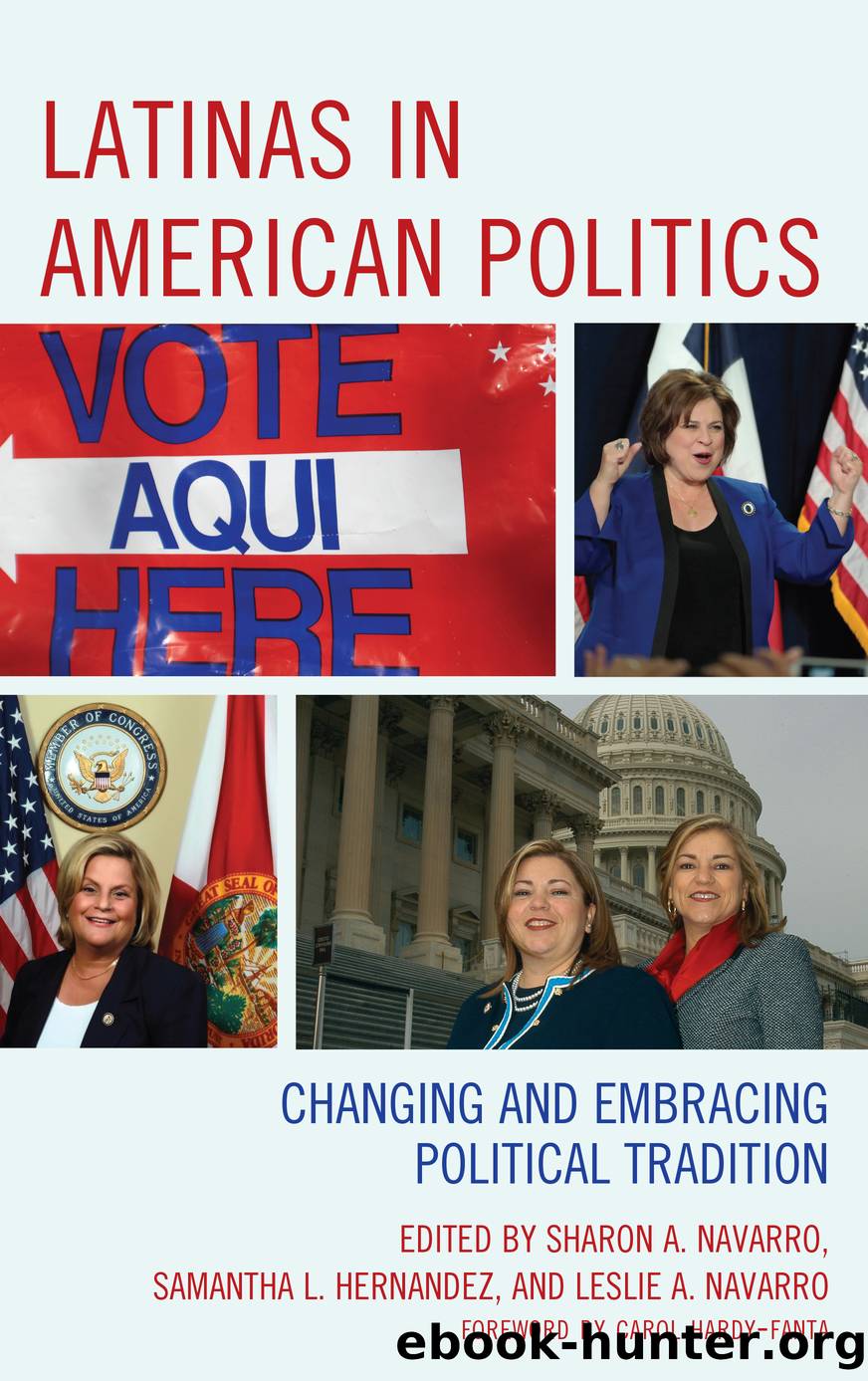Latinas in American Politics by unknow

Author:unknow
Language: eng
Format: epub
Publisher: Lexington Books/Fortress Academic
Published: 2016-08-15T00:00:00+00:00
Photo 7.1. Susana Martinez, first elected Latina governor. Public domain.
Unlike Susana Martinez, Michelle Lujan Grisham represents a longstanding prominent New Mexico Hispanic family. Lujan Grisham is a twelfth-generation New Mexican born in affluent Los Alamos, NM, and raised in Santa Fe (Office of Congresswoman Lujan Grisham). Several of the Lujan family members have served in New Mexico public office, including her grandfather, Eugene Lujan, who was âthe first Hispanic Chief Justice of the New Mexico Supreme Courtâ (Office of Congresswoman Lujan Grisham); her uncle, Manuel Lujan, Jr., served in the U.S. House of Representatives and as Secretary of the Interior under George H. W. Bush; and her cousin, Ben Ray Lujan, serves alongside her in Congress representing New Mexicoâs 2nd district in the northern half of the state (Ralph Nader Congress Project). Michelle Lujan Grisham represents the New Mexico exceptionalism in terms of Hispanic political inclusion in comparison to Hispanics and Latinos in other parts of the country. The contrast between Lujan Grisham and Martinez also exemplifies the heterogeneity of Hispanics in New Mexico ranging from those who trace their family lineage to landowning Spanish elites and other long-established Hispanic communities to those who have come in later immigrant generations.
Electoral Context: Running for Office
We have argued that theories of Latina elite behavior, including strategic intersectionality and double disadvantage, are not at odds but are reflections of two different contexts: the electoral context as candidates and the institutional context in governing. The electoral context is typified by two distinct settings: the demographics of the state, particularly as it applies to Hispanic vote share, and the level of office establishes the size of the district. In addition we also argue that a Latina candidateâs success in running for office, that is her opportunity for strategic intersectionality, will be conditioned upon partisan politics. We suggest that party identification is a primary motivator for a voterâs choice of elected officials, and that advantages can only be reaped in comparison to other candidates of the same party. We show that because the Democratic Party has been successful in monopolizing Latino and womenâs issues, Republican Susana Martinez has and will find it more challenging to rally Latino and women voters in comparison to Democrat Michelle Lujan Grisham.
Demographic Context
Perhaps the primary factor in situating the question about generalizability is the demographic context. Nationwide, the Latino population is about 17 percent; however, the density of this population varies greatly by region (Ennis et al. 2011). The Latino population by state ranges from less than two percent in states like West Virginia, Maine, and Vermont to 47 percent in New Mexico (Ennis et al. 2011). The variability in the density of the Latino population means that we should expect varying percentages of Latina elected officials by states, where states with higher percentages of Latinos (such as New Mexico, Texas, and California) should produce more Latina elected officials, but also that Latina elected officials exist in varying demographic contexts. In some states, such as New Mexico, being a
Download
This site does not store any files on its server. We only index and link to content provided by other sites. Please contact the content providers to delete copyright contents if any and email us, we'll remove relevant links or contents immediately.
| Argentina | Bolivia |
| Brazil | Chile |
| Colombia | Ecuador |
| Guyana | Paraguay |
| Peru | Suriname |
| Uruguay | Venezuela |
Cat's cradle by Kurt Vonnegut(13903)
Pimp by Iceberg Slim(12950)
Underground: A Human History of the Worlds Beneath Our Feet by Will Hunt(11274)
4 3 2 1: A Novel by Paul Auster(11078)
The Radium Girls by Kate Moore(10923)
American History Stories, Volume III (Yesterday's Classics) by Pratt Mara L(4829)
Perfect Rhythm by Jae(4630)
Wiseguy by Nicholas Pileggi(4606)
The Fire Next Time by James Baldwin(4354)
Paper Towns by Green John(4179)
A Higher Loyalty: Truth, Lies, and Leadership by James Comey(4044)
Pale Blue Dot by Carl Sagan(4019)
The Mayflower and the Pilgrims' New World by Nathaniel Philbrick(3921)
The Doomsday Machine by Daniel Ellsberg(3742)
Too Much and Not the Mood by Durga Chew-Bose(3702)
Killers of the Flower Moon: The Osage Murders and the Birth of the FBI by David Grann(3629)
The Borden Murders by Sarah Miller(3597)
The Sympathizer by Viet Thanh Nguyen(3528)
Killing England by Bill O'Reilly(3466)
